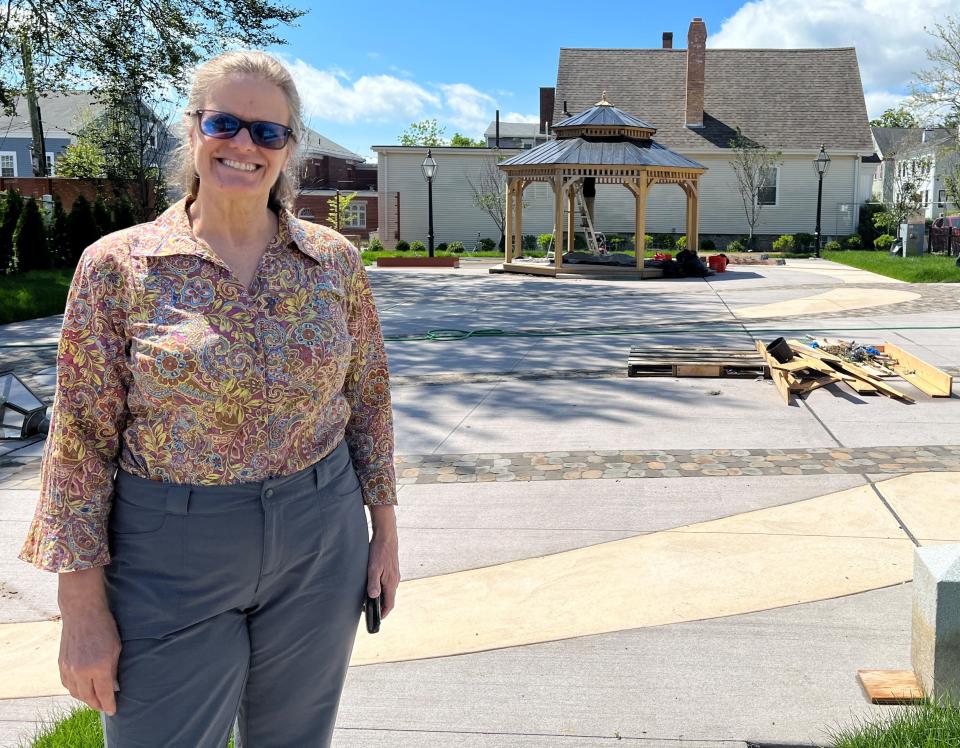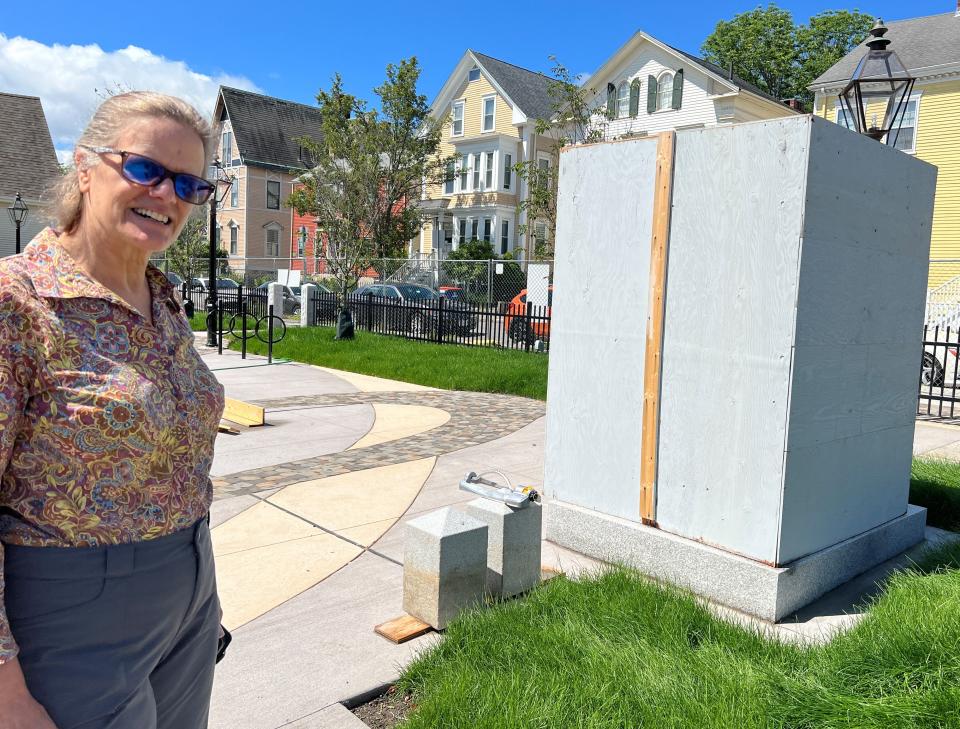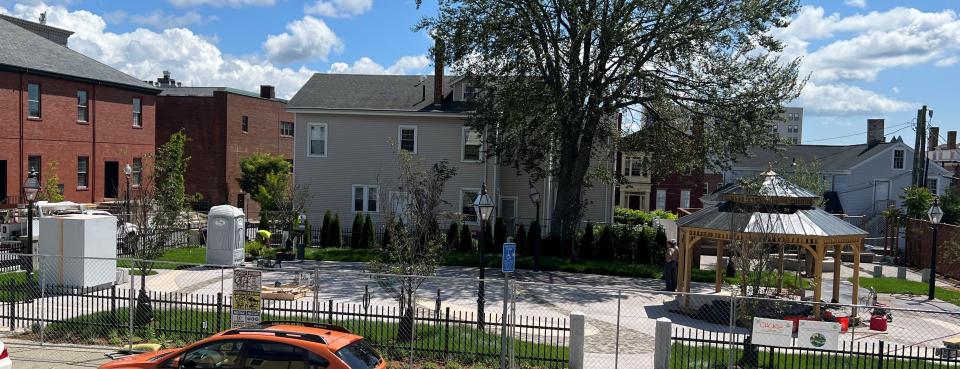A Frederick Douglass statue will be unveiled at Abolitionist Row Park in New Bedford
- Oops!Something went wrong.Please try again later.
NEW BEDFORD — After years of planning, Abolition Row Park will officially open with a ribbon-cutting ceremony on Seventh Street on Friday, June 23, at 1 p.m.
The park's statue of Frederick Douglass will be unveiled during the ceremony. The full-body statue is currently concealed by a wooden box.
Sculptor Richard Blake, nationally renowned for his artwork of Black historic figures, produced the statue.
Heather Heimarck, the project's landscape architect, has been at the site helping to put on the finishing touches.
Where is Abolition Row Park in New Bedford?
The park is located across the street from the Nathan and Polly Johnson House at 21 Seventh St., which is also the headquarters of the New Bedford Historical Society. The NBHS is hosting the event.
The Nathan and Polly Johnson House is also where Douglass spent his first years living as a free man.

What are the plans for the Frederick Douglass statue?
Heimarck said granite from a historic staircase at the park site has been incorporated into the park, serving as stairs to the gazebo. A portion of the granite will also be inscribed with a Frederick Douglass quote.
The paving patterns are also symbolic, she said, and indicate "the many different paths to freedom."
Heimarck added, "There wasn't any one way, and it wasn't direct and it wasn't easy."
The two houses that made way for the park were once owned by the Thorntons, an abolitionist family, said Anne Louro, deputy director of city planning.

One was destroyed in a fire and the second was demolished by the city after falling into disrepair.
Why is Seventh Street known as Abolitionist Row?
Seventh Street's rich abolitionist history is why it has become known as Abolition Row.
Seventh Street also includes the original Quaker Meeting House and the second Meeting House.
Abolitionist Row Park a New Bedford tourist destination
Louro said plans for the park go back to at least 2018.
The city actually began working with Seventh Street residents to designate the neighborhood as a local historic district in 2016, which was approved this year by the City Council.

Lee Blake, president of the New Bedford Historical Society, told the Standard-Times last April that the park will become a historical attraction for residents and visitors, as well as a destination for tourists visiting New Bedford's historic locations and the waterfront.
This article originally appeared on Standard-Times: Abolition Row Park ribbon-cutting in New Bedford June 23

